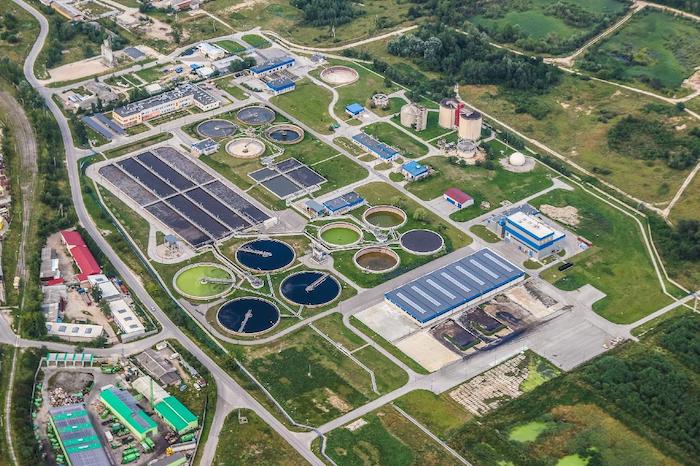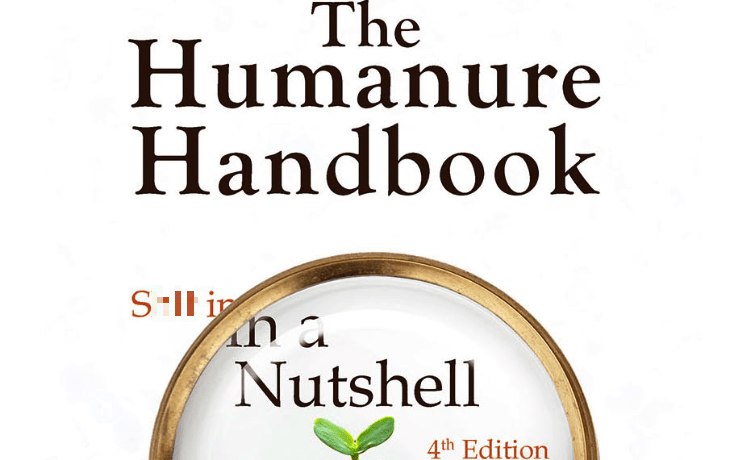It’s possible you end up in an emergency situation where you have to deal with human waste management. Maybe you’re sheltering at home but the toilets don’t work for weeks. Or shit has really hit the fan (sorry, couldn’t resist) and you now have to grow food to survive but you can’t buy store fertilizer.
For the past quarter-century, Joseph Jenkins has been on a mission to convince the world that composting human manure is the solution. His book, The Humanure Handbook, is now in its 4th edition.
Sure, you could bury or toss your waste in nature, away from your home. But that’s a short-term fix that will lead to smell and possibly dangerous pathogens.
For millions of people around the world, this isn’t some prepper fantasy, but a real, everyday problem. Many communities in developing nations use unsanitary outhouses or pump their sewage directly into water sources. In fact, the latter is still practiced in some parts of the United States.

The Humanure Handbook will teach you more about poop than you probably ever cared to know, but with a big dose of humor. This is not a book for the easily offended, and it’s not the best resource for practical how-to, but it’s an essential guide to understanding how to safely compost your turds.
Summary:
- The Humanure Handbook is full of interesting data and weird humor. But it doesn’t go very deep on the practical advice, such as how to DIY your own compost toilet, and you may find it too vulgar/scatalogical.
- Buy the physical book, not the ebook, since it comes as a PDF that doesn’t work well on e-readers like the Kindle.
- Jenkins does a thorough job of making our current methods of waste disposal seem insane. We poop in our drinking water and then use expensive and intensive processes to clean it up.
- A better solution is to compost waste, which eliminates pathogens and most chemicals while turning the waste into a valuable soil amendment that can counteract soil depletion.
- The secret to composting humanure without causing a stink is to cover it in generous amounts of sawdust.
- Check local laws and regulations before going down this path. Consider building a compost toilet for an outbuilding before you subject your family to it.
Check out the beginner’s guide to composting and other bathroom-related posts:
- Cut down on toilet paper use with a bidet
- Toilet paper rolls have shrunk since COVID
- Grow your own toilet paper
The way we dispose of waste is insane
Jenkins’s main goal is to convince you of the insanity of the existing waste management system. His second goal is to train you to be a good advocate for the cause, and he’s oddly prescriptive about language to use. For instance, he tells you to never refer to human excrement as waste, because it’s a valuable agricultural resource that shouldn’t be thrown away.
Jenkins is an odd guy and The Humanure Handbook is an odd book, but he thoroughly succeeds at his first goal, pointing out that humans are the only animals who poop in their drinking water (other than fish, who can’t help it).

If you’re connected to a sewer system, consider what happens when you flush the toilet:
- Fresh, potable water is piped into your toilet, filling the tank.
- The water falls from the tank into the bowl, flushing the contents down the drain pipe.
- The waste is sent, through an elaborate and expensive series of pipes, to a wastewater treatment facility.
- At the wastewater treatment facility, expensive machines and expensive chemicals are used to clean the water to make it safe for drinking again.
To the end user, it’s almost magical. You press a lever and the poo (usually) disappears. But there are real costs involved in making that magic happen. Municipalities spend billions every year on waste treatment. And there isn’t an infinite supply of chemicals. Those chemicals also often make tap water taste like a swimming pool, leading many to either filter it or drink bottled water, which isn’t just bad for the environment, but reproductive health.
Something not mentioned in the book is the hazards of being a sanitation worker. In my newspaper days I spoke with one such worker who had become deathly ill due to exposure to sewage.
Another problem is that much of the debris goes to waste. A tiny amount is used as agricultural biosolids, some is incinerated as fuel, but most of it ends up in landfills. It could be put to much better use.
For thousands of years, human agriculture had a sustainable cycle. We grew crops that took nutrition from the soil, but we replenished the land by putting animal and human poop back into the ground — the shitty circle of life.
These days, most farmers use machines, not animals. And they fertilize the land with chemical fertilizers, which do an amazing job of providing nitrogen, phosphorus, and potassium, but don’t add much else. Over the past century, soils have become depleted and vegetables less nutritious.
If you’re interested in the topic of soil depletion, check out the Netflix documentary Kiss the Ground, which posits that at the current rate of soil depletion, the earth’s soils may only have 60 harvests left. I’m a bit skeptical the number is that low — that’s in our lifetime! — but the issue of soil depletion is still a very real problem.
One thing we’ve learned over the past decades is how deadly human manure can be, spreading bacteria, parasites, and viruses. We now know better than to simply throw our poop on our fields. So how can we rebuild our soils and better manage feces without making ourselves sick? The answer is the magic of compost.
Composting poo safely
Composting is an essential homesteading activity that lets you convert “waste” and food scraps into organic matter for your garden. Most of the time it’s as easy as throwing food on the ground and repeating the process over and over. Nature will take care of the rest.
But greater care must be taken when dealing with humanure.
Jenkins spends a great deal of the book delving into the science of compost and his own views on it. For instance, he doesn’t consider mesophilic (cold) composting to be composting at all, but only thermophilic composting, where the pile gets hot.
From the perspective of composting potentially hazardous human manure, he’s correct. You want a nice, hot compost that destroys pathogens and most chemicals.
The good news is that it’s easy to do with poo because it’s so high in nitrogen. But that also means you need a great deal of carbon to add bulk to the compost and keep your pile from stinking. Jenkins recommends sawdust, as it’s extremely high in carbon but is fine enough that it breaks down easily, unlike wood chips, which take forever to break down.
Even though sawdust is best, you can use any sort of carbonous material, like hay, leaves, woodchips, etc. If your pile smells at all, pile on more cover material. One material you don’t want to use is soil, since Jenkins says that the pathogens that are attracted to poop co-evolved with humans who pooped on the ground, so soil is a perfect medium for them.
Interestingly, while Jenkins cautions against covering poo with soil, he insists that you should put your compost piles directly on the ground, as the soil contact encourages the microbes needed to break down the pile. He recommends digging a small depression under the pile to prevent leaks from the sides of the bin, and lining that depression with organic sponge material like grass.
He also doesn’t recommend turning compost piles for a number of reasons, but probably the main one is so you’re not digging into poop. Fair enough.
Personally, if I ever get around to this, I would keep my poo piles separate from my other compost piles.
But the question remaining is how do you capture the poo to put in the pile?
Capture the material with composting toilets
A traditional outhouse, like what you may find at a rural campground, is essentially just a pit in the ground that acts like a septic tank. Similarly, there are expensive commercial composting toilets, but like outhouses, they’re designed to keep the manure inside the toilet itself. Which doesn’t help you turn it into compost you can spread elsewhere.
Jenkins essentially recommends pooping in a bucket, although he’s adamant that the reader should never refer to it as “pooping in a bucket.” Also, pooping into a bucket without any sort of support is a bad idea, since it could easily tip over. Jenkins recommends building a wooden frame that holds the buckets, which he calls a compost toilet.
This is where the book falls a little flat. There are only a couple of pages dedicated to the construction of said toilet, but maybe that’s because it’s a simple-enough design: you build a wooden box, cut a big hole to fit a five-gallon bucket, and then install a toilet seat over top. You then line the bucket with sawdust and then cover your droppings with additional sawdust instead of flushing.
Jenkins sells a commercial model, called the Loveable Loo, which is nothing more than a plywood box with screws for the outrageous price of $400. Even then, you still have to assemble it, and it’s often out of stock. You’d be better off buying some plywood and building one yourself at a fraction of the price.
This sort of toilet has a number of advantages over a standard flush toilet:
- There’s no plumbing, so you can put one anywhere. It’s especially handy for people who can’t easily walk to the bathroom.
- Also, since there’s no plumbing, there’s no worry about water leaks or broken pipes.
- Which also means you’re entirely independent of the grid since you don’t need water.
The big disadvantage, other than horrifying house guests, is where the heck do you put the thing?
It would take some work to remove one of our flush toilets, cover the pipe, and put a compost toilet over top. I also don’t have a lot of extra room in my house to put a big, wooden box toilet. I’m also worried that my kids would get into it.
Still, I’m intrigued by the idea. It would make our family less resilient on the grid, would reduce our household waste, lower our water bill, and would be a big boost to our garden. On a larger scale, it would make for cleaner water, lower costs to municipalities (and maybe even lower taxes), and help regenerate our soils.
I already have buckets and sawdust on hand, so perhaps I’ll make the basic box and keep it in storage until we find ourselves in a relevant emergency.
But there are big impediments. I’m not so sure I could convince my family that going in a box is a great idea. And I’m pretty sure guests would be absolutely horrified by the concept (not such a bad thing if you want fewer houseguests).
There are also questions of legality. In some places, such a setup would be flat-out illegal or at the very least make your HOA irate. And even if it is legal, the government may try to shut you down anyway.
If it helps, there is some celebrity support behind the idea. Actress Patricia Arquette is a co-founder and executive director of GiveLove, which works with Jenkins to distribute compost toilets in Haiti, Africa, and other areas that need improved sanitation. It’s definitely one of the more interesting celebrity causes.

You are reporting the comment """ by on